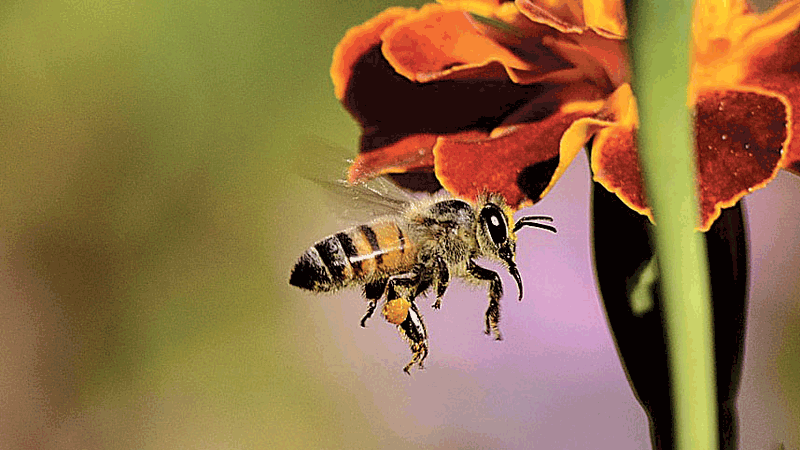BIRDS, BEES, FLOWERS, TREES TELL SPRING IS HERE
 There’s a robin on the lawn in front of my house, walking through the dry brown leaves of last year and the grass that’s a mix of winter yellow and brown and spring-time green. It’s a male, likely the robin I’ve heard singing from a tree in front of the house soon after dawn the last few days.
There’s a robin on the lawn in front of my house, walking through the dry brown leaves of last year and the grass that’s a mix of winter yellow and brown and spring-time green. It’s a male, likely the robin I’ve heard singing from a tree in front of the house soon after dawn the last few days.
I saw robins in January and February this year, and last December. But they were in flocks, birds, I believe, that did not migrate south last winter. The robin on the lawn, I believe, is a loner, a spring arrival.
There are red-winged blackbirds at the bird feeder in front of my house, all males. There are more redwings calling from the cattails of our marsh and from the trees around the marsh. The redwings at the feeder, some of them at least, have been coming to the feeder all winter. The redwings around the marsh, like the robin on the lawn, I believe, are spring arrivals.
Robins and red-winged blackbirds were infallible indicators of spring, until last winter and the winter before. Those were two of the ten mildest winters recorded in northern Indiana. Reacting to the warmer weather some robins and redwings didn’t to go south. I saw a few other summer birds last winter also, bluebirds several places, a white-throated sparrow and a song sparrow at the bird feeder in front of my house.
All the indications are of spring, the length of the day, the birds arriving, some of them singing, some of them disappearing after a few days, winging their way farther north, the grass in my lawn. We can tell by the wildflowers in bloom, the aptly named harbinger-of-spring, also called pepper-and-salt, bloodroot, spring beauty, hepatic. Though not wildflowers, daffodils in our flowerbeds are also indicators of spring and are beginning to bloom. The maple trees in our yard are in bloom. Soon the dainty little maple blossoms will fall and be replaced by leaves.
Ducks swim on lakes and ponds that were ice covered a month ago. I’ve seen mallards and ring-necked ducks and buffleheads. There are Canada geese too but the geese are with us year round.
Raccoons and opossums, skunks and woodchucks and chipmunks have roused from their winter rest or sleep and are out and about. The ‘coons, ‘possums and skunks are night roamers and I’ve not seen many of them. Sadly, when I have seen one of the night roamers it’s usually been dead, laying in a road or along the side of a road, hit and killed by a passing car or truck as it was crossing the road. Often there are crows or turkey vultures in attendance at the corpse. Vultures are indicators of spring. When a carcass is frozen a vulture can’t tear it apart to feed.
Spring peepers call. Other frogs and toads call. Bees and flies and mosquitoes and other flying insects are out. The flies and mosquitoes are unwelcome but when I see them I know there will soon be tree swallows and barn swallows flying over our marsh and our pasture. A few days after their appearance the barn swallows will begin swooping in and out of the open barn door, then carrying mud and grass, using the mud to plaster a nest on the side of one of the overhead beams.
By the time barn swallows are building a nest in our barn house sparrows and robins, red-winged blackbirds and mourning doves will have nests with eggs or nestlings. Warblers will be here, some, common yellowthroats and yellow warblers and redstarts, to nest, others passing through, on their way to more northern nesting grounds.
March is nearly past. The birds and the bees, the flowers and the trees all tell that spring is here.
- Birds As Weather Forecasters – Life In The Outdoors - December 17, 2021
- Rare Bird Spotted In Indiana – Life In The Outdoors - October 8, 2021
- MY EXPERIENCE WITH DEER – Life In The Outdoors - July 30, 2021


